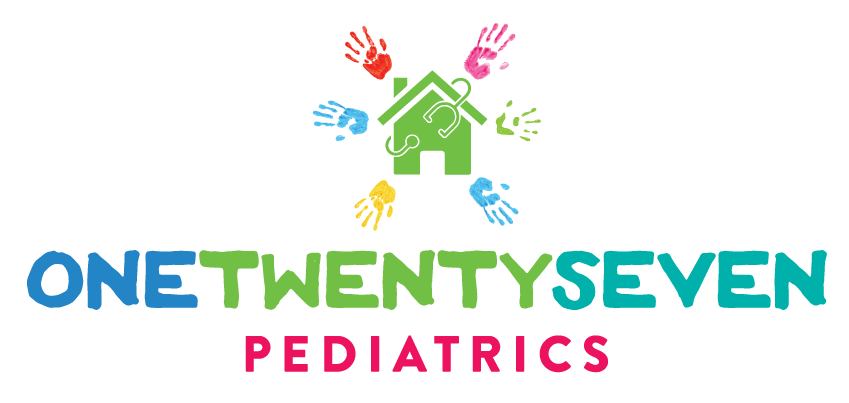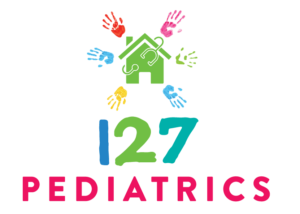My child was the most angelic newborn. She slept a lot and rarely cried.
Those behaviors lasted until we got her home from the hospital. On her third day of life, she turned into a child akin to the baby on the movie The Incredibles. You know, the one that bursts into flames when he gets upset.
While my actual baby never caught fire, her behavior had me questioning myself about just how long should you let a newborn cry.
Newborn Crying Behavior
Newborns cry for all sorts of reasons. It is their only form of communicating with other people. Some babies cry a lot and often while other babies cry very little. Just as my own newborn expressed her needs immediately through crying about almost everything, some babies show their personalities early through their crying behaviors. While crying is not necessarily dangerous for your baby, it is definitely something that wears on new parents. Solving the mystery around your newborn’s crying behaviors will hopefully give you more moments of peace in your day.
In this article, we will look at how to understand your baby’s different cries, what to do to decrease nighttime crying and what colic or purple crying looks like.
Understand Your Baby’s Different Cries
In the early days of your new baby’s life, all of their cries may sound the same to you. You are tired, and the baby seems to cry about everything. However, as you begin to know your baby better, you will start to understand the different sounds of their crying. Each tone or pitch can indicate distinctive needs.
As you start to figure these cries out, you and your new family unit will start to develop a rhythm of diaper changes, feedings, snuggle time and hopefully some amount of sleep. Growing to understand the crying patterns of your newborn will enable you to understand how to anticipate his or her needs. Anticipating your baby’s needs will eventually result in less crying.
In addition, it is important to get a sense of how much or how little stimulation your baby can tolerate. Some babies become overstimulated very easily while others thrive on stimulation. Discovering your baby’s unique needs will lead to better communication between the two of you with less time spent crying.
Crying Overnight
New babies need to eat at night. It is an important part of what helps them to grow and develop. In order to increase their body weight and mature their growing brains, they need to take in calories. Fueling these needs on a liquid diet, means that the baby needs to eat often. This is especially true in the first few weeks of life.
While, eating and crying overnight is part of expected newborn behavior, there are some things that you can do to decrease the amount and frequency of this crying.
You want to teach your baby that the daytime hours are for fun and wakefulness, and the nighttime hours are for sleeping.
Days are for Playing and Nights are for Sleeping
First, you should make night time very boring. When your baby wakes at night to feed, keep the lights low. Feed the baby with the least amount of stimulation as possible. Resist the urge to make it a fun filled time with mommy (or daddy). These behaviors will help communicate to your baby that night time is for sleeping.
Next, make the daytime more stimulating. While your baby will sleep most of the 24 hours in any given day, you can increase their time in a light filled and more noisy environment during the day to set their circadian day/night rhythms to match your own. As they transition from life in the womb to life on the outside, you can begin to shape when and how your baby sleeps. When the baby sleeps, there is less crying for everyone in the house.
Remember, newborns have developing pineal glands. This is the part of the brain that secretes melatonin, which helps us to regulate day and night rhythms. Over time, your baby will develop these rhythms.
What is Purple Crying?
There is a period of your baby’s life where their crying seems to increase. It is a normal part of development that many babies experience. While we often call this colic, there is a better name for it now that helps to normalize it. The period of purple crying is defined by the acronym PURPLE.
Peak of crying- the increase in crying may build and peak at about two months of age
Unexpected- crying can come and go without any good explanation
Resists soothing- your baby cries no matter what you do
Pain like face- baby appears to be in pain, even though they are not experiencing pain
Long lasting – 5 hours or more of crying per day
Evening – the most crying occurs in the evening or late afternoon
To read more about purple crying, there is a fantastic website that can help you navigate this difficult time. In addition, learning more about this will help you to not feel so alone. Thankfully, these behaviors generally diminish when your baby reaches about 3 months of age.
In the meantime, be sure to take care of yourself.
How to protect your mental health
Listening to your baby cry for hours on end can do bad things to your mental health. Crying babies can be stressful, especially for new mothers. Your stress hormones increase and cause you to do things that you may have never otherwise contemplated.
If you feel yourself on the verge of a break down, set the baby down in a safe place and walk away for a few minutes. Allowing the baby to cry for 5-10 minutes alone in their bed is not going to cause any lasting harm.
In addition, schedule real time away from the responsibilities of motherhood. This goes a long way to protecting your thoughts and emotions. Hire a babysitter for a couple of hours so that you can take a walk around the neighborhood or go to the store by yourself, hand the baby to your husband on a Saturday morning so that you can get some extra rest, or leave your own mom in charge of the baby while you go take a bubble bath or shower in peace.
If these things are not helping you to recenter or you are feeling out of control with thoughts of harming yourself or the baby, please seek help.
Additional support is available here, or reach out to your OB, family doctor, child’s pediatrician or your fourth trimester care specialist.
How Can 127 Pediatrics Help?
If you live in the DFW metroplex, 127 Pediatrics serves families in the Colleyville area with home visit pediatric and lactation care. We take the stress out of newborn and pediatric care by bringing your child’s healthcare home. Visit our website today to find out more about our exciting practice!
© 127 Pediatrics, February 2022, updated December 2023

Dr. Andrea Wadley is the owner, pediatrician, and breastfeeding medicine specialist for 127 Pediatrics. She has an established house calls only pediatric practice in Colleyville, TX. Dr. Wadley also sees patients all over Tarrant county for concierge breastfeeding medicine consults, lactation consults, fourth-trimester care, tongue tie clipping, and medical ear piercing.


